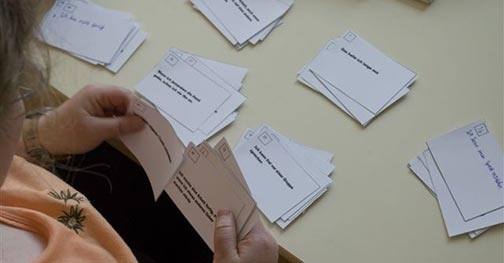Many disadvantaged young people have acquired competencies that may be relevant for VET through processes of non-formal and informal learning but that cannot be used systematically, because these competences are invisible.
Making these competences visible should enable disadvantaged youth to better understand their own competencies and to learn how to use them for VET, should give educators a better understanding of pupils` competences acquired outside schools and should enable teachers to systematically use these competences in preparing for VET, should give disadvantaged youth better access to training and employment in companies, should enable companies or training institutions to systematically use these competences in VET.
The purpose of the validation tool is to make visible competencies that have been acquired by young people in various areas of activities outside formal learning. Making these competencies visible helps the young person to better understand what abilities she or he has and how these abilities can be applied in further learning, in vocational training, in a job but also in private life. Making competencies visible also helps educators (teachers, trainers, social workers) to better link education and training to what competencies the young person has already acquired and helps prospective employers to learn more about the abilities of applicants that are not shown in the certificates that they are able to present.
The aim of the ICONET project was to transfer and mainstream the validation approach to new countries, sectors and target groups. It combined four dimensions of transfer: the dimension of countries: transfer to countries, not included in the previous project (Portugal, Austria, France); dimension of sectors: while the previous project concentrated on the school-to-work trajectories between final levels of compulsory education and vocational training / work, in ICONET also further vocational education have been included (Germany, United Kingdom), in addition in Greece the validation methodology had been delivered to SMEs and disseminated throughout the industrial sector; dimension of target groups: previous implementations of the validation approach within the framework of ICONET have been expanded in terms of quality and quantity, by adressing now also young migrants (Germany, France, Portugal), young prisoners(Romania) and disabled target groups (Austria); transversal dimension: imparting the ICOVET-model with existing structures of validation of informal competences (Germany, UK)
The transfer methodology of ICONET built on 1) Development of transfer profiles, 2) Localization of the ICOVET-model and adaption to the needs of the target groups, 3) transfer of instruments, methods and training curriculum, 4) piloting of implementations, 5) capitalizing on the results of piloting and mainstreaming the ICONET-approach, 6)Identification and documentation of good practices, 7) Capitalizing on project results and ensuring long-term sustainability. In order to allow for a lifelong learning dimension the partnership at the end of the project, and based on the experience of the ICONET transfer projects, defined a long-term strategy, how the ICOVET approach in the national context should be further capitalized in order to increase the personal and institutional capacities for managing educational / life transitions, both vertically (between different levels of education) and horizontally (between eduation and work).
{youtube}AW1gSx14CLk{/youtube}
Runtime: 2009 - 2011
Program Scheme: Lifelong Learning Program of the European Union
Sub-Program: Leonardo da Vinci
Promoter: Deutsches Jugendinstitut e.V., Germany
Website: ICONET
